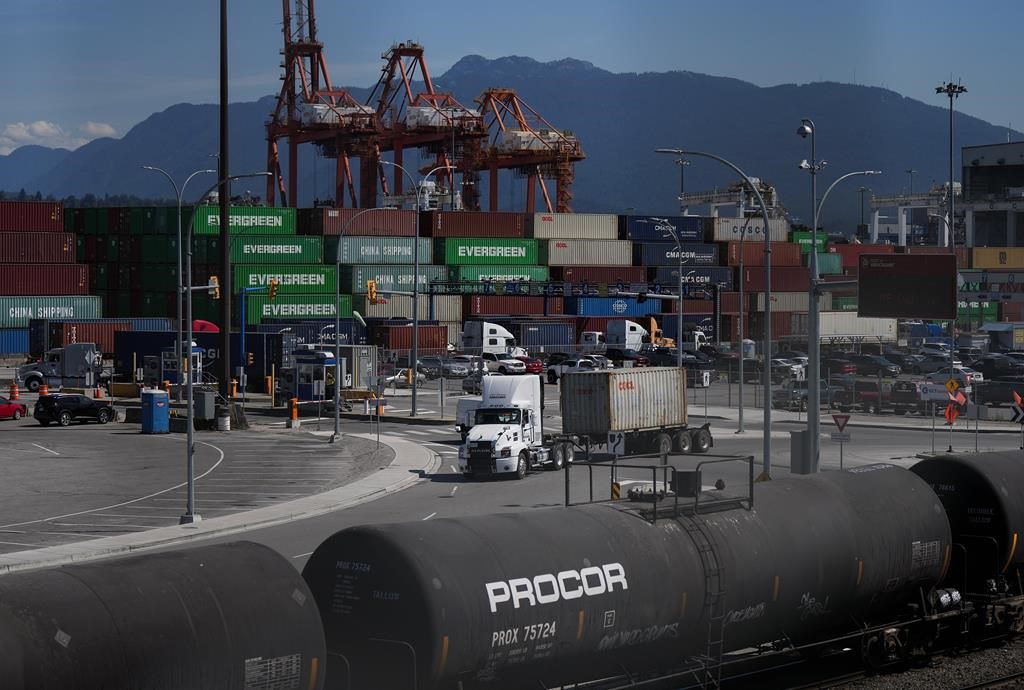Record cargo volume rolled through the Port of Vancouver last year, despite a sputtering global economy and a big drop in container shipments.
An unprecedented 150.4 million tonnes of bulk, breakbulk and container goods traversed the docks at the country’s largest port, a six per cent increase over the previous year, the Vancouver Fraser Port Authority said.
Large amounts of grain, petroleum, container exports, and auto imports caused the increase. But too many retail products in stock and lower demand brought down container imports and overall shipments, according to the federal agency.
“It was a mixed year at the Port of Vancouver, with growth in some sectors and softening in others,” it said in a release.
“While there was a softening of container volumes moving through the Port of Vancouver in 2023, Canada’s container sector remains on a long-term growth trajectory and we saw encouraging signs of recovery in Q4 as year-over-year volumes started to grow,” CEO Peter Xotta said.
An economic slowdown, a 13-day strike by B.C. dockworkers in July and ongoing disruptions along the Red Sea and Panama Canal trade routes all posed challenges to smooth operations at the port, he said.
Its 12 per cent boost in overall exports to 142 countries in spite of those hurdles showcased the value of a diverse range of shipment types and national partners, Xotta added.
Grain, canola, and crude oil led to the increase in bulk exports due to a strong harvest and a record increase in oil production from Alberta. Fewer exports of forest products and fertilizer dampened the figures.
A significant decrease in household goods, which make up nearly a third of inbound container items, caused a 12 per cent drop in container shipments overall. Fewer construction materials, industrial parts, and auto parts also contributed to the decline.
The increase in container exports, particularly boxes loaded with wood pulp and specialty crops like lentils bound for India, helped make up for the drop in inbound shipments.
Meanwhile, the number of vehicles that entered Canada through the port increased by 36 per cent to over 454,000, as manufacturers improved their supply chains.
But for many shippers, the year started with challenges.
Attacks on cargo vessels by Houthi militants in the Red Sea over the past few months have forced ships to avoid the Suez Canal by taking longer routes around Africa’s Cape of Good Hope.
A drought in Central America added to the problems, as it has depleted the Panama Canal's water supply, which is used to move ships through the locks, leading officials to limit the number of boats passing through.
However, routes between East Asia and the West Coast are less affected. While shipping rates from East Asia to the western United States have tripled over the past year, rates on cargo headed the opposite way have dropped by 28 per cent, according to freight analytics firm Xeneta.
On Asia-Europe routes, rates for cargo ships coming and going have greatly increased.



